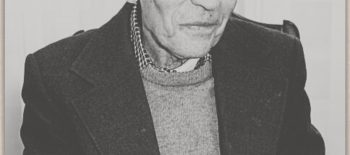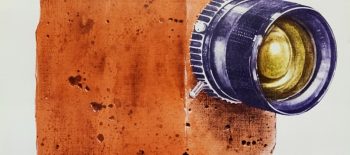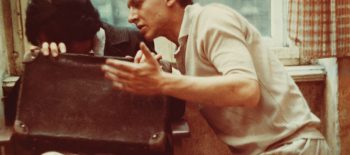University of Wisconsin Stout Furlong Gallery
712 South Broadway Str.
Menomonie, WI 54751
Curatorial Statement by Izabela Gola, Visual Arts Curator at the Polish Cultural Institute New York
Polish Cultural Institute New York in collaboration with the University of Wisconsin-Stout was proud to present Monika Weiss’ triptych of works assembled for “To Freedom” comprising of Koiman II – Years Without Summers (a selection from 24 Nocturnes), 2017-present; a new sound piece Thinking of History, 2022, commissioned by media scholar and author Ming-Yuen S. Ma and based on a sentence which the artist chose from his book There is no soundtrack: Rethinking art, media, and the audio-visual contract (in which the artist is included); and a new music and choreography piece Orgé, 2022, a live performance with participation of the UW-Stout Symphonic Singers, selected faculty and students, with its world premiere at the To Freedom opening reception at Furlong Gallery in Menomonie, WI on November 7, 2022 at 5:20pm CT.
“The ritual of lament is historically assigned to and identified with the body of a woman, as if they, who have given life, also watch over the end of life and span the mysterious frontier between the two” (The Fidelity of Memory in An Endless Lament, Nirbhaya, New Delhi, 2012 and Now by Griselda Pollock in Monika Weiss-Nirbhaya, Centre of Polish Sculpture in Orońsko, 2021).

It has been 1 year since Russia invaded Ukraine on February 24, 2022, taking thousands of lives on both sides, and causing Europe’s largest refugee crisis since World War II, with an estimated 7.7 million of displaced Ukrainian bodies from their homes fleeing the country, most of them being the bodies of young women and children as war analysis report.
Margaret Alexiou, a scholar of lament, in her book, Ritual Lament in Greek Tradition, (1974), points at the fact that lament was forbidden in ancient Athens, especially the organized lament of women who protested war, rape and violence. Monika Weiss in her recent artist statement writes that lament was recognized as something polluting the public sphere, as by default controlled by men of authority (patriarchal) space with the “filth of despair.”
In fact, this act of outpouring of enacted grief is not a passive symptom, but an articulated community organized act of protest and resistance, which when carried out in a public space becomes an empowered, emancipatory, political act in solidarity against the archaic idea of war. This act of resistance against imperial patriarchy was perversely silenced in ancient Greece and is still the case today.
The circular narrative structure of Weiss’ installation presented at To Freedom, is a sequence sourced from works performed at different times of the artist’s 25-year carrier, focusing on works from 2017 to most recent, a time-based sonic, cinematic, and performed live triptych that invites the viewers to transition from the intimate personal experience of traumatic shock in reaction to violence of war into the collective body.
The power of Weiss’ artistic message channels ancient performative vocal tradition of lament—as well as her live-long relationship to, and practice of, music (the artist was first educated as a pianist and classical musician)—transforms the viewers experience of time and space into a new sonic and visual landscape, and with the participating vocalists or movement performers contribution to the act, like in Orgé, 2022, the piece becomes a collective body.
Through this intersection of the personal and the public in Orgé, 2022, a “forest” of performative bodies in Furlong Gallery will create a spiritual body in an articulated humanistic act of protest against war and violence.

This transition is done through the act of deep listening, a concept inspired by a connection between music and meditation in a work of a composer who is Weiss’ major influence, Pauline Oliveros.
Deep listening requires inner silence and concentration similar to meditation, when the consciousness and awareness is centered into inward presence.
For this reason, there is a specific sonic stillness between acts to which audience members as well as performers should pay special attention to, an interim space of dense sonic textures that focus listening attention inward and transform the participants from intimate individual bodily experience to an articulated collective conscious presence, a collective body.

The piece Orgé, 2022, is conceived as site-specific vocal music and as choreography of stillness. Every time it will be performed it will transform, depending on the physical surroundings and the number of participating vocalists. Orgé, 2022, is an ancient Greek word which means “wrath.” It comes from the verb oragō meaning, “to teem, to swell” and thus implies not a sudden outburst, but rather a permanent, established, and passionate feeling, solidifying what the beholder considers wrong.
It is important to note that Russian oppressor attempts to claim not only the land, and its citizens but also Ukrainian culture by not only promoting a distorted view of modern Ukraine and its history, but also destruction of the Ukrainian cultural heritage centers, museums, and institutions, as it was documented across the nation. In resistance to those neo-imperial and neo-colonial urges to claim Ukrainian cultural identity, it is of essential importance to embrace Ukrainian cultural heritage, emphasize its independence, and express solidarity through the means and power of culture, and this is what Monika Weiss offers in her installation, a circular narrative of three revolutionary acts. Following artist’s reflections, “a revolutionary act embraces emancipation as a potential vision of the future, in which all the mourners become part of a heroic memory, carved in stone, engraved in lament, a memory that history cannot erase just as the lost and raped lives of the people of Ukraine will never surrender to erasure from public memory.”
In European tradition of figurative art, Christian iconography anchors the body image in the body of Christ, tormented, wounded, decaying, evoking death and sacrifice like in a painting by Hans Holbein’s The Body of the Dead Christ in the Tomb,15020-1522, in which the viewer confronts dead Son of God after he has suffered humiliation and fate of an ordinary human. Weiss transforms this visual tradition and preserves its pathos and spiritual transition from life to death without the didactic theological layer, opening the act of mourning as a form of presence -an existential state between life and death – to a more universal language, providing point of entry to the collective experience.
In result, Weiss creates a new ritual as a unique artistic form of performance, transgressing the formal and spiritual qualities of traditional lament—in both the archaic rituals of lamentation and the form of lament in music history—inviting to spiritual transformation that is not theological but accessible to all participants, regardless of their religious and spiritual identity. This method creates a democratic act of solidarity, a psychological space where participation of the viewer’s body intersects with the bodies transgressed by war and famine and resulting loss and displacement.

Weiss’ performative work mobilizes solidarity through sound and movement that create interconnectedness between the displaced tormented bodies traumatized by war, institutionalized violence, and all violent acts, and the participants (performers and audience members) bodies, through the primordial depth of individual grief mediated and empowered through lament. That point of intersection is the core of resistance and a collective voice of protest.
Exhibiting artists in To Freedom: Riivo Kruuk, Christina Shmigel, Monika Weiss.
Monika Weiss’ work in the exhibition is curated jointly by Izabela Gola, Visual Arts Curator, Polish Cultural Institute New York, and Robert Atwell, Furlong Gallery Director. Monika Weiss’ project has received financial support from the Polish Cultural Institute New York and University of Wisconsin-Stout. Additional support was provided by Sam Fox School of Design & Visual Arts, Washington University in St. Louis.
To Freedom was initiated by Dr. Jerry Hui Chiwei at University of Wisconsin-Stout in response to ongoing war in Ukraine and was organized in close collaboration with the Polish Cultural Institute New York, the Estonian Consulate General in New York, and the Ukrainian Institute of America.
The exhibition To Freedom was through December 17, 2022.
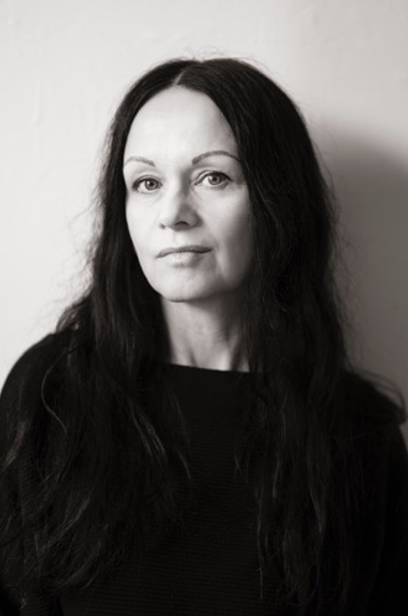
Monika Weiss
Biographical Note
Over the past twenty-five years, the prominent New York-based Polish artist Monika Weiss (b. 1964, Warsaw, Poland) has developed a transdisciplinary practice composed of sound, moving image, sculpture, performance and drawing. Recurring material and conceptual motives in Monika Weiss’ work include sonic space, water, the body, slow movement, doubling and gestures of lament, performed and choreographed in response to collective trauma. Her synesthetic art resists closure as it explores states of transformation and oscillates, as Mark McDonald (The Metropolitan Museum of Art) noted, “between proposal and presence, the allusive and the tangible”.
Weiss’ work has been featured in over 100 international solo and group exhibitions. It has been written about in numerous books and publications including The New York Times, ARTnews, and Art in America. Weiss’ solo museum exhibitions include the 2005 retrospective at the Lehman College Art Gallery (CUNY) Five Rivers, reviewed in The New York Times, as well as Sustenazo, commissioned by the Centre of Contemporary Art Zamek Ujazdowski in Warsaw, Poland (2010), later travelling to the Museum of Memory & Human Rights, Santiago, Chile (2012-2013) and the Patricia & Phillip Frost Art Museum, Miami (2014). In 2004 Remy Toledo Gallery, New York, in cooperation with Galerie Samuel Lallouz, Montréal, organized a two-person exhibition of Carolee Schneemann and Monika Weiss. The artist’s works have been shown in group exhibitions alongside artists including Louise Bourgeois, Ana Mendieta, Mona Hatoum and Shirin Neshat, at venues such as Stavros Niarchos Foundation, Athens, Greece (international video art survey directed by Robert Storr, 2016); Eyebeam, New York (with Alan Sondheim, 2012), Cisneros Fontanals Art Foundation/CIFO, Miami (Forms of Classification: Alternative Knowledge and Contemporary Art, 2006; The Prisoner’s Dilemma, 2008), Drawing Now: Between The Lines of Contemporary Art, Loughborough University, UK, and was part of Prague’s Muzeum Montanelli (MuMo) ’s inaugural show in 2010. Weiss’ recent sound installation Metamorphosis (2021) has been featured in a survey of Polish feminist art at A.I.R. Gallery, New York (2022) and reviewed by ARTnews.
In 2021 a new bi-lingual monograph Monika Weiss – Nirbhaya was published by The Centre of Polish Sculpture in Orońsko, with texts including feminist art historian Griselda Pollock, The Met curator Mark McDonald, and the acclaimed Indian American poet Meena Alexander. Other recent publications include a chapter in Guy Brett’s The Crossing of Innumerable Paths: Essays on Art (London: Ridinghouse, 2019). As part of The Metropolitan Museum of Art series Artists on Artworks, a 30 min. film with Monika Weiss speaking on her work and on the work of Goya, premiered in 2021. Since 2011, the artist divides her time between her New York studio and her professorship at Sam Fox School of Design & Visual Arts, Washington University in St. Louis.
Devoted to forgotten victims of everyday gendered violence Weiss’ monument/antimonument Nirbhaya is planned to open in Fall 2023 at Dag Hammarskjold Plaza, the Gateway to the United Nations in New York, for several months duration. In June 2024 Nirbhaya is scheduled to open at Laumeier Sculpture Park in St. Louis.
– Written by Katarzyna Falęcka


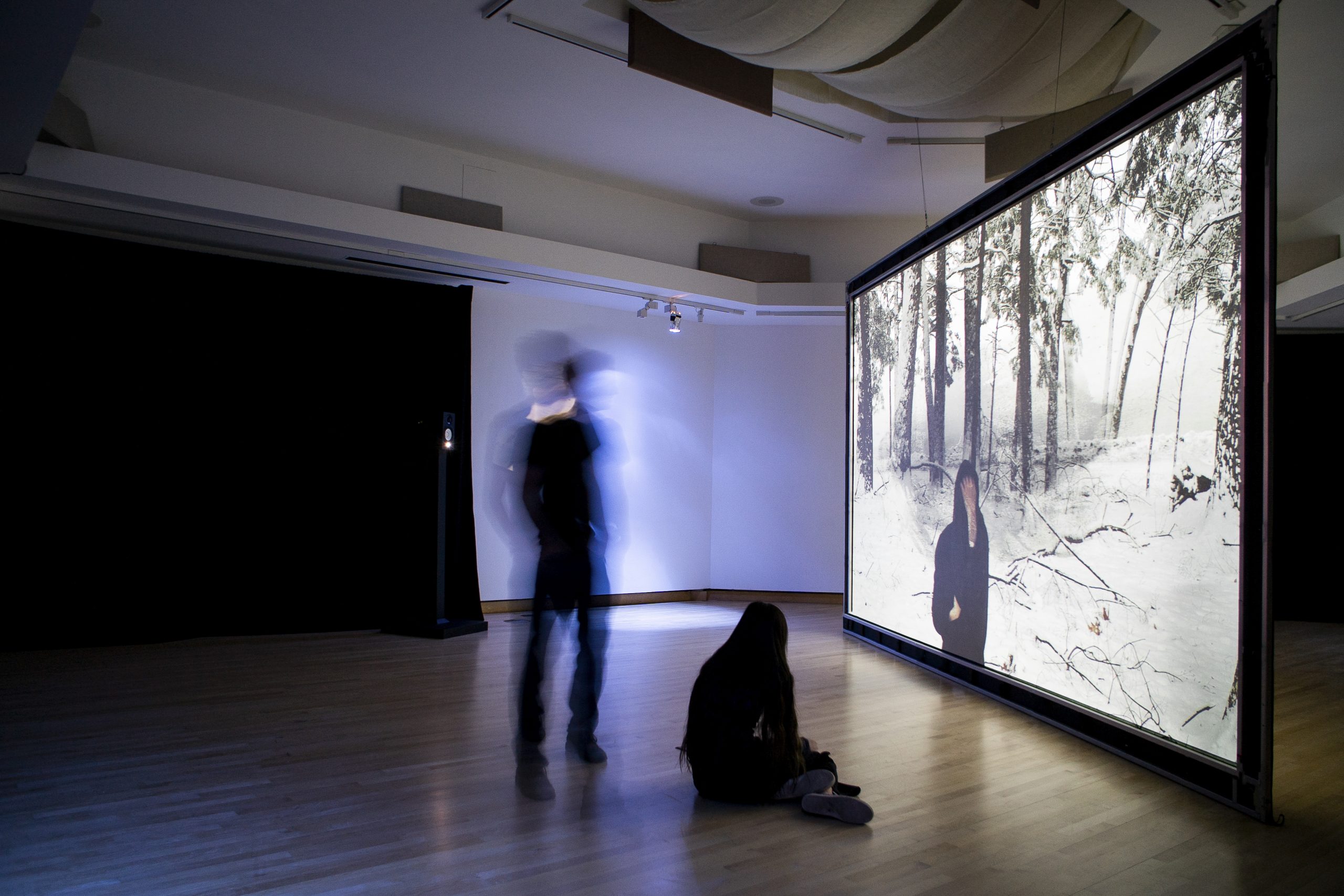

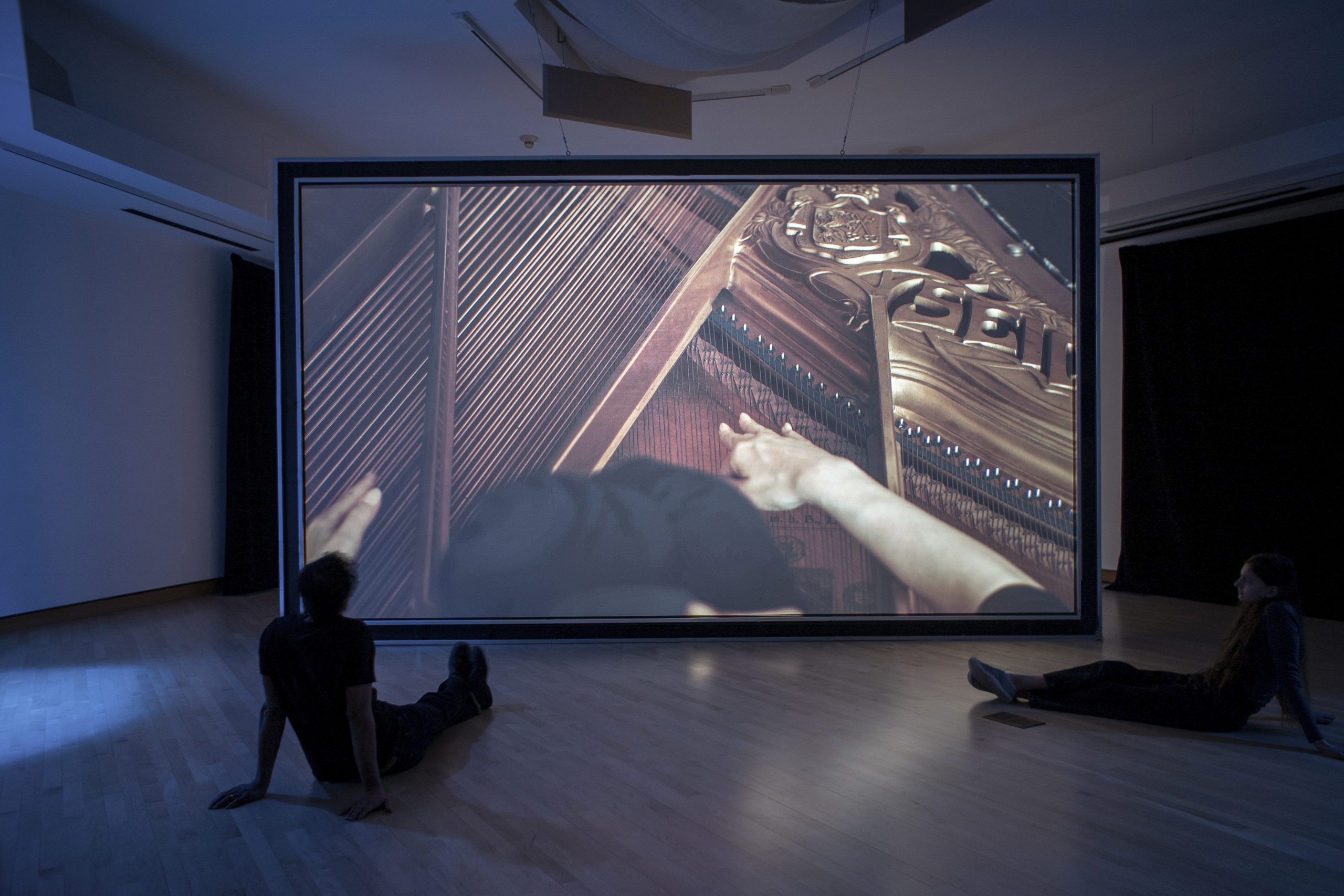

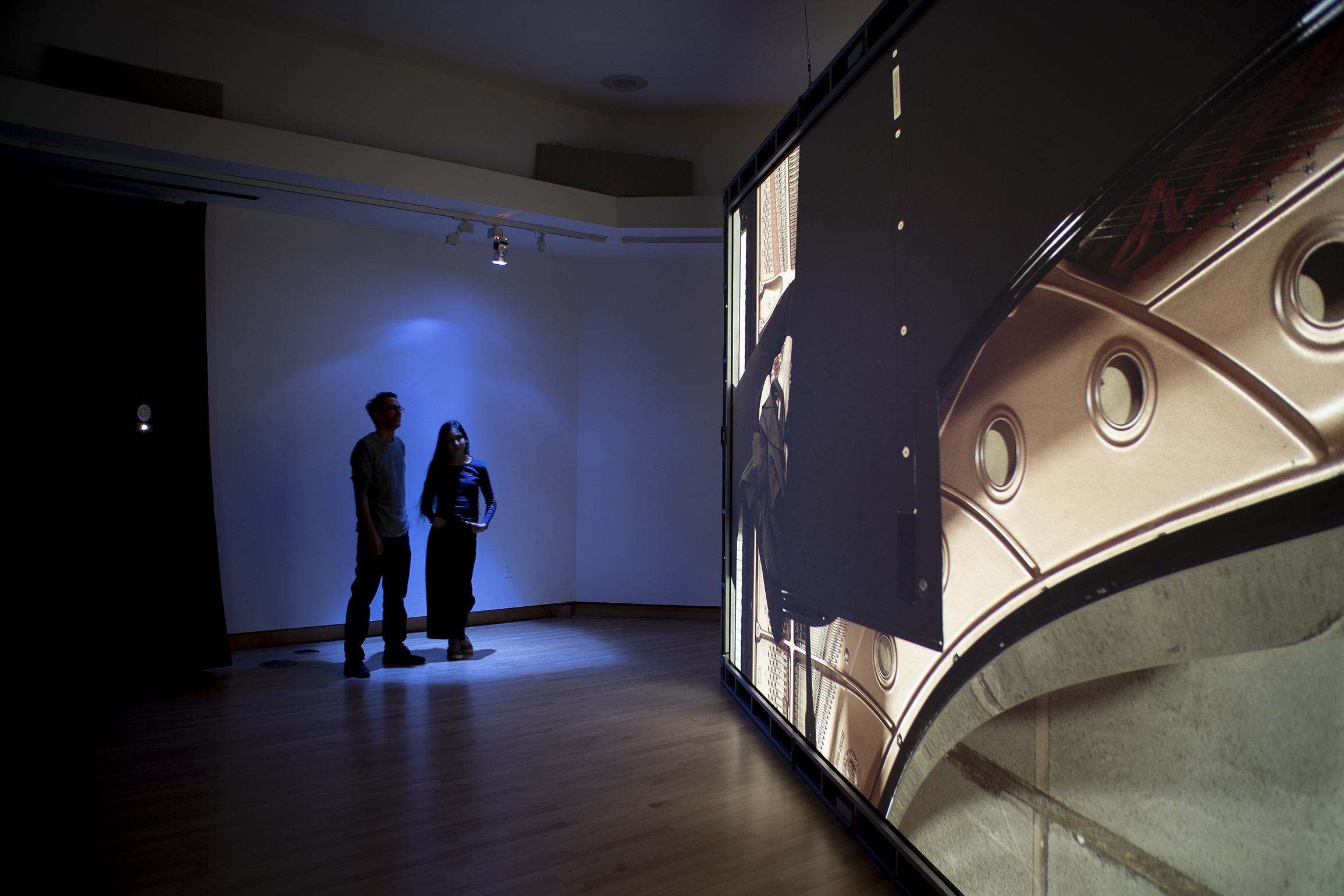

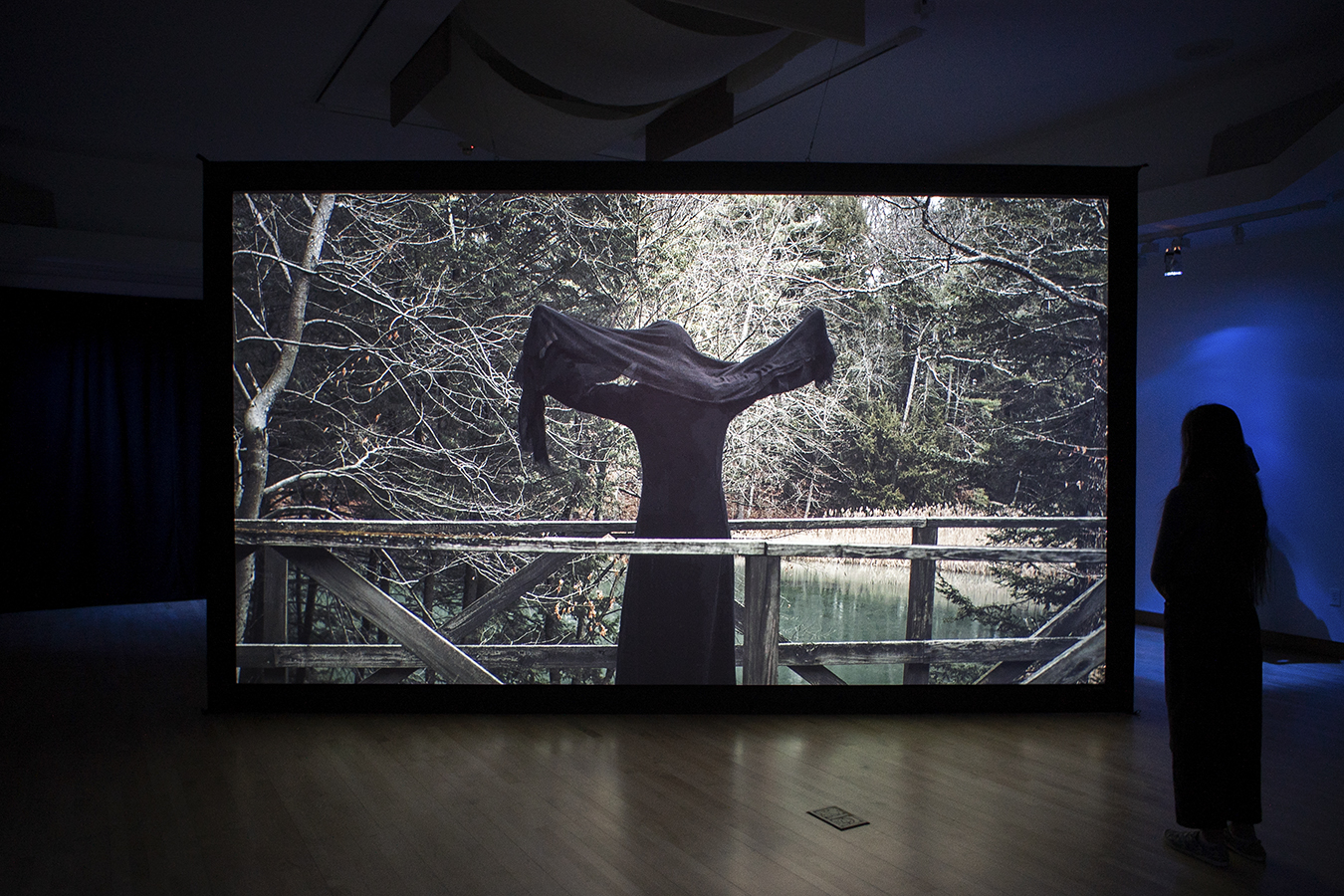
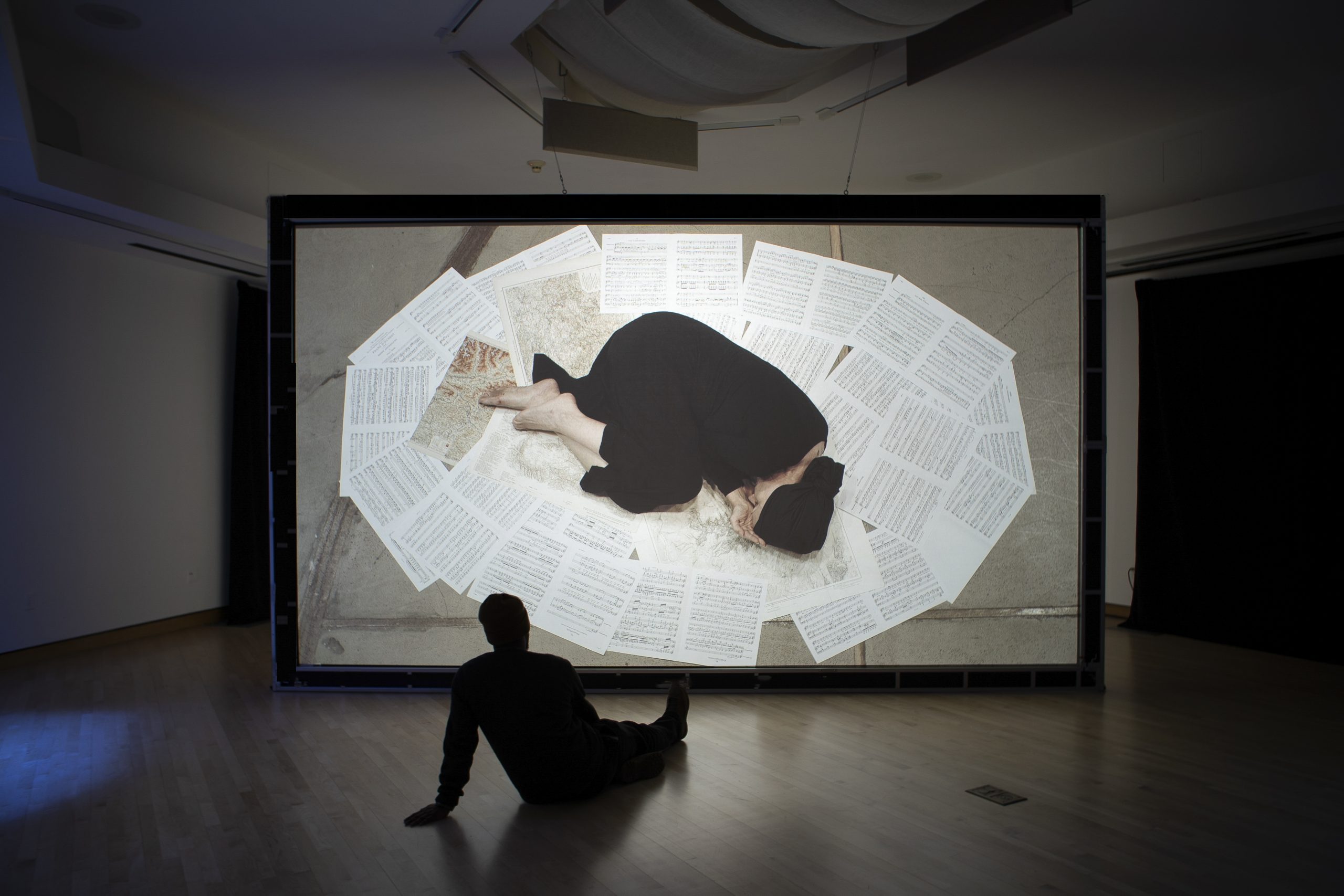
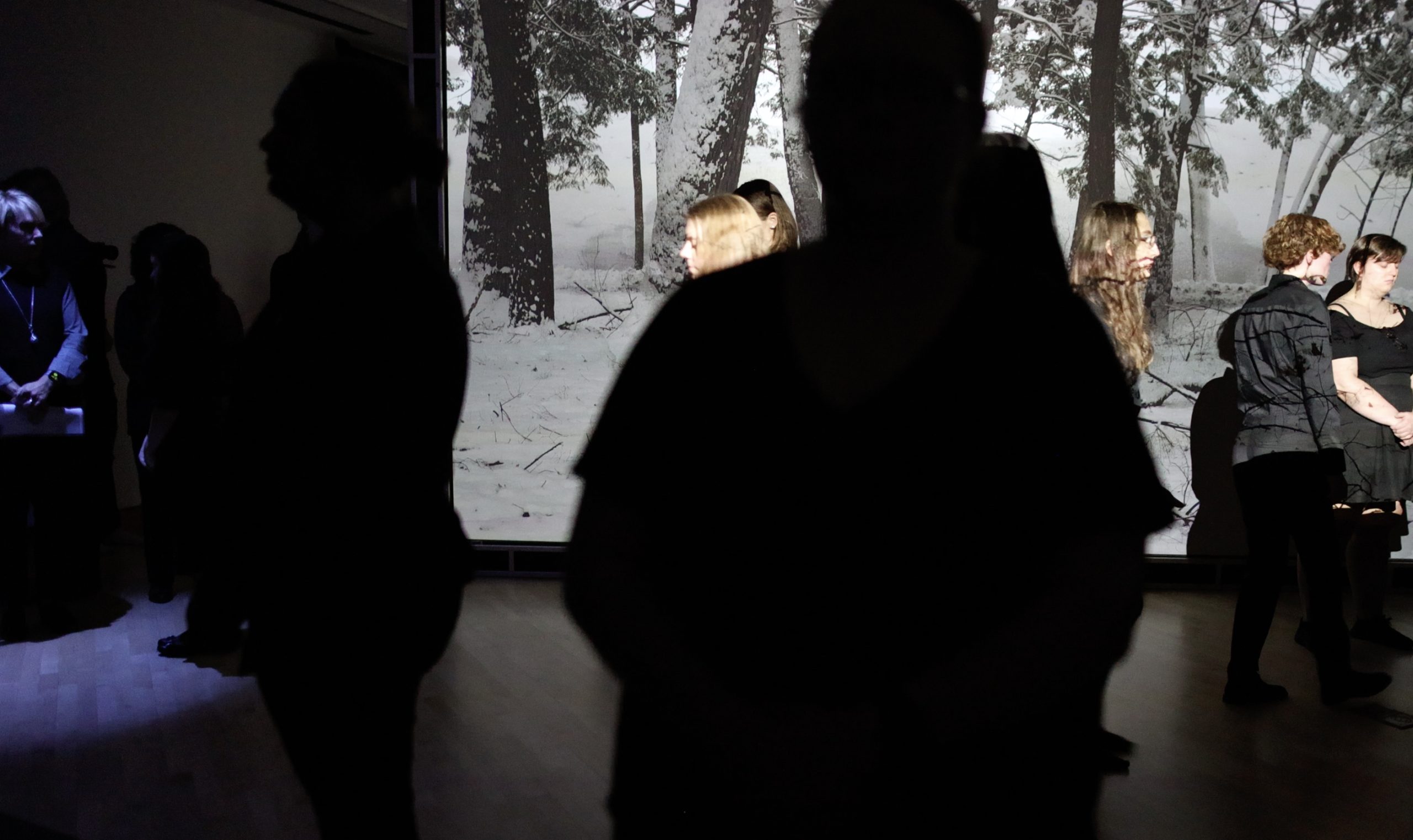

Monika Weiss
Orgé, 2022
Composition for voices and space
Composed and choreographed by the artist
Voices: Min Bucheger, tenor, August Galeazzi, alto, Izabela Gola, alto, Jerry Hui, countertenor, Kat Schlauderaff, soprano, UW-Stout Chamber Choir, and selected faculty and students from the University of Wisconsin-Stout.
Duration: 20 min.
Orgē belongs to an ongoing series of vocal, cinematic and choreographed projects by the intermedia artist Monika Weiss whose oeuvre often evokes ancient rituals of lamentation and addresses collective memory and historical trauma. Orgé is conceived as site-specific choral and sculptural environment to resemble a forest of voices. The artist divided the vocalists into those who sing standing, like trees, interspersed throughout space, and those who she named as Wonderers, who move through space very slowly. Audience will also be able to walk through this field of live vocal sound to experience being on the inside of Orgé. The Nov. 7th concert/performance is Orgé’s official world premiere. Audience members will be asked to remain silent throughout the concert, with the phones turned off. No photography is allowed.
Orgé is an ancient Greek word which means “wrath”. It comes from the verb oragō meaning, “to teem, to swell” and thus implies not a sudden outburst, but rather a permanent, established, and passionate feeling, solidifying what the beholder considers wrong. In my art, the musical and choreographed Lament connotes power and resistance through silence, sound and movement. In my work Lament is often organized as music but also as a form of stillness and expressed through slow silent gestures evoking states outside of specific time or place. Together, the performers and the audience members become part of an affective, psycho-somatic space of what I call, unforgetting. Walking themselves through the chorus of tree-like standing figures of vocalists, the audience will hopefully experience the stillness and power of quietude of the space of Lament. The lost and raped lives of the people of Ukraine will never succumb to being erased from public consciousness. Orgé is sung as a protest against that war, but also as an expression of beauty, towards a possibility of freedom. – Monika Weiss, artist statement, 2022
Monika Weiss
Thinking of History, 2022
Sound composition
Duration: 10 min.
Composed by the artist
Voices: Kurt Gottschalk, Tyler Krszjzaniek, Jeremie Lambert-Delhomme, Sharlene Lee, Ming-Yuen S. Ma, Neha Naraya, Nicolas Reeves, and the artist
Opera vocalist: Anna Wasilewska, soprano
Piano: the artist
Additional credits: Mastered by Experimental Media Arts, University of Arkansas, Fayetville, AR. Special thanks to Adam Hogan.
Thinking of History is a new sound work by Monika Weiss commissioned by media scholar and author Ming-Yuen S. Ma and based on a sentence which the artist chose from his book There is no soundtrack: Rethinking art, media, and the audio-visual contract. Live premiere of Thinking of History took place on April 7, 2022, as part of This is not a reading / Ceci n’est pas une lecture, a series of remixes and conversations inspired by sound, in which the author Ming-Yuen S. Ma invites artists discussed in his book.
Thinking of History is a song in three parts. The first scene represents a dark ocean of history evoked by drone sounds, with a single female voice singing wordlessly as if from a great distance. I composed the middle part by recording a number of readers, creating a tempest of voices. Throughout the piece we hear underlying drones based on my piano improvisations but transformed electronically such that the piano is no longer recognizable. In the last part of the composition, the piano enters, now fully identifiable, responding rhythmically to the words and sentences we heard earlier. I finished the composition on February 23, 2022. The day after, on February 24th, I woke up to a world that changed forever. – Monika Weiss, artist statement, 2022
Monika Weiss
Koiman II (Years Without Summers), 2017-present
Sound composition, 4K film projection
Duration (part I): 20 min.
Edition of 3 + 2 AP
Directed, recorded, written, composed, choreographed, filmed and edited by the artist
Piano: the artist
Movement performance: the artist
Voices: Maksymilian Bielecki, tenor, Keith Wehmeier, countertenor
Text based on a poem Gute Nacht by Wilhelm Müller, part of Winterreise, 24 poems set to music by Franz Schubert (1828)
Sound was mastered at Experimental Media Arts, University of Arkansas, Fayettville, AR. Special thanks to Adam Hogan. Additional audio technology support by Harvestworks, New York. Special thanks to Matthew Ostrowski.
Filmed on location as part of the artist’s residencies at BRIC, Brooklyn, NY and YADDO, Saratoga Springs, NY. Additional filming took place in Brattleboro, VT and Brooklyn, NY. Special thanks to Eden Bird and the late Dina Helal.
In memory of Gabriela Weiss.
Koiman II – Years Without Summers (24 Nocturnes), 2017- , a deeply personal and political work, comprises twenty-four film projections, an equal number of sound compositions and large charcoal and graphite drawings. The subtitle derives from the 1815 volcanic explosion in present day Indonesia that affected the global environment leading to what was described as “a year without summer” (in 1816). The ensuing darkness in parts of the world caused by volcanic ash was described by those who witnessed it, and is compared by Weiss to the darkness that envelops our world: refugee crises, climate change and the rise of blinkered nationalist ideologies. In the film, set against desolate and dark landscapes and sites of abandonment, the protagonist gestures and moves silently. The drawings that evoke the explosion appear momentarily superimposed on the figure creating a suggestive union. Whereas the drawings were conceived as independent works, their relation to the film enriches their autonomy. Graphically they resist, their media (graphite powder and archival glue) links directly to the historic past while evoking the notion that through the obscurity of ash, our culture cannot perceive its own future. – Mark McDonald, Curator, The Metropolitan Museum of Art, “Drawing Consciousness: Monika Weiss” in Monika Weiss-Nirbhaya, Centre for Polish Sculpture in Orońsko, 2021, p. 68
Inspired by Winterreise (Winter Journey), a cycle of 24 songs for voice and piano composed in 1828 by the German Romantic composer Franz Schubert, this work is dedicated to the artist’s late mother, pianist Gabriela Weiss and to current refugees and migrants around the world. Each film portrays an anonymous female protagonist performed by the artist. Following the eruption of volcano Tambora, Indonesia in 1815, the spreading ash cloud cooled global temperatures by reflecting and scattering sunlight and impacted weather patterns in Europe and in the northeastern United States. Rain, frost and snowfall occurred throughout the summer of 1816, causing agricultural disaster, famine and migration. Scholarly research suggests that severe weather may have inspired works by a number of artists, poets and composers of the time. The accounts by travelers who were at sea following the Tambora explosion, describe darkness during the day, making it impossible “to see your hand outstretched.”
Two hundred years later the world appears to me as if shrouded in a symbolic ash cloud resulting from the global climate change, the collapse of Arab Spring, the current refugee crisis and the gradual and global move towards fascist ideologies. My project Koiman II is meant to evoke this notion of darkness, eruption, explosion, coldness and clouding, and is greatly affected by global conditions—such as displacement, violation and exploitation of bodies of others—which mirror the abuse and gradual disintegration of the natural environment resulting from colonial agendas. – Monika Weiss, artist statement, 2017


